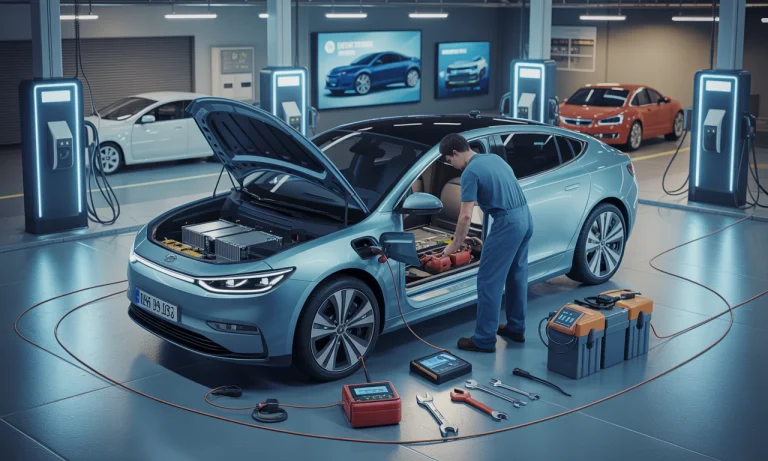Across city centers and country roads, the quiet revolution of electric vehicles pulses forward. Enthusiasts and skeptics alike find their interest piqued not just by the promise of zero tailpipe emissions, but by the financial realities of daily ownership. Stories abound of Tesla, Nissan, and Chevrolet owners comparing receipts in parking lots, curious about whether the expected cost savings hold up over time. What emerges is a new calculus for car owners, with maintenance at its core. While established names like BMW and Hyundai adapt their strategies for EV servicing, newcomers like Rivian and Lucid enter the conversation, challenging assumptions at every turn. Here, facts and figures converge with stories from the road, painting a dynamic portrait of what it truly costs to keep an electric car humming year after year, and why so many drivers are rethinking what it means to “own” their car in 2025.
Key Factors Influencing Electric Car Maintenance Costs in 2025
For every driver who once worried about oil stains in the driveway, electric vehicles now promise a different experience. The heart of that promise lies in the significantly fewer moving parts under the hood. Modern models from Volkswagen, Ford, and Kia demonstrate this shift: beyond the streamlined silence, they demand less routine attention. Yet, costs are not erased altogether—they’re simply restructured, with categories like battery management, tire life, and brake upkeep stepping forward.
Take Anna, who made the leap from a gasoline commuter to a Hyundai Ioniq 5. Her annual routine shifted from oil changes and spark plug replacements to annual reports on battery health and proactive tire checks. When friends asked if her maintenance bills shrank in tandem with her carbon footprint, Anna highlighted the nuance: while she spent less overall thanks to regenerative braking (which preserved her brake pads far longer), she still set aside funds for specialized EV tire sets and regular diagnostic check-ins at the dealership.
| Maintenance Category | Estimated Annual Cost (USD) | EV Example |
|---|---|---|
| Battery maintenance | $200–$500 | Tesla, Lucid, Nissan |
| Tire replacement | $400–$800 | Kia, Chevrolet, BMW |
| Brake maintenance | $100–$300 | Ford, Volkswagen, Rivian |
| Other expenses | $50–$200 | All brands |
This table reflects how maintenance is now structured—fewer surprises, more predictable bills. The shift is underscored by real-world comparisons and evolving car technology, as outlined in analyses like this breakdown of annual EV costs.
Battery Longevity and Manufacturer Warranties: The Heart of EV Maintenance
If any component commands the spotlight in EV maintenance, it’s the battery. Owners of brands like Tesla and Lucid often find comfort in comprehensive warranties. Tesla’s promise of an eight-year infinite-mile warranty has become the stuff of legend, while Nissan and Chevrolet offer similarly robust support for their modern electric lineups. These warranties often include regular diagnostics—battery conditioning, calibration, and balancing—sometimes built right into the service package.
However, as Mark, a Rivian truck owner, discovered, warranty terms can play a decisive role when planning long-term usage. Despite the assurance, Mark schedules annual checkups, aware that EV batteries, while reliable, are not immortal. Costs fluctuate by chemistry: lithium-ion packs cost more than nickel-metal hydride, but rarely surprise owners with sudden failures thanks to predictive maintenance systems. More on battery care and attack plans for maximizing longevity can be explored at this practical guide.
Then there’s the matter of what happens after warranty periods end—illustrated by the stories shared in forums and real world, where drivers coordinate battery swaps with dealership specialists, often factoring in incentives or trade-ins to minimize out-of-pocket costs.
Tire and Brake Maintenance for Electric Cars: Real Costs Revealed
Among the earliest lessons for new EV drivers is the subtle but crucial difference in tire wear. Electric cars, especially sporty models from BMW and performance-minded brands like Lucid, place unique demands on their tires due to instant torque delivery. Recognizing this, manufacturers recommend specialized rubber—typically more expensive upfront but more resistant to the wear-and-tear of regenerative braking cycles.
Pauline, a Chevrolet Bolt owner, became a convert to low rolling resistance tires after her original set outlasted expectations. While the sticker shock of $200 per tire lingered, the durability and improved range justified it. Regular tire checkups—rotations and air pressure monitoring—also play a non-negotiable role in extending intervals between replacements. For fresh drivers preparing for their first electric adventure, reference tips like these test driving essentials to grasp subtleties in EV road feel that affect tire and brake longevity.
| Component | Average Lifespan (Miles) | Typical Replacement Cost |
|---|---|---|
| All-Season Tires | 60,000 | $100–$200 per tire |
| High-Performance Tires | 35,000 | $200–$400 per tire |
| Brake Pads (w/ Regenerative Braking) | 50,000 | $150–$300 per set |
Regenerative braking—a staple on Ford, Volkswagen, and Kia models as well—translates into longer brake pad lifespans and rare replacements. That longevity plays out in quiet savings year after year, as confirmed by user stories in communities and comparisons like those on this in-depth breakdown.
Additional Electric Car Maintenance: Hidden and Miscellaneous Expenses
While battery, brakes, and tires headline most EV maintenance ledgers, a constellation of small, sometimes surprising costs fill out the experience. Windshield wipers, cabin air filters, and the occasional paint touch-up keep service centers familiar with models from Kia to BMW in brisk business. Even in the world of routine simplicity, occasional glitches—software updates or infotainment malfunctions—require the skillset of trained technicians familiar with the language of electric car diagnostics.
For instance, Lee—a Ford Mustang Mach-E driver—found himself budgeting modestly for twice-yearly filter changes and the rare but critical headlight replacement. These rarely break the bank, typically staying under $200 annually, but they define the peace-of-mind that characterizes the new era of car ownership. For more on how these minor costs weave into total cost of ownership, see the perspectives at this resource.
Are Electric Cars Really Cheaper to Maintain? Comparing Legacy and Newcomer Brands
Beyond individual receipts, a broader narrative develops around whether electric cars from Tesla and BMW truly deliver the advertised savings over traditional combustion vehicles. Analysis reveals a consistent pattern: while initial costs vary—especially for luxury models or those with advanced driver assistance features—ongoing maintenance expenses tilt in favor of EVs.
It’s a calculation that made all the difference for Georgia, who switched from a gas-powered sedan to a Volkswagen ID.4. Freed from routine oil changes and major engine repairs, her average annual savings hovered near $600 compared to her prior car—mirrored in owner reports nationwide and reflected in insights such as these findings. The trend stretches across the market: whether it’s the accessible price point of a Nissan Leaf, the premium cachet of a Lucid Air, or the utilitarian appeal of a Rivian truck, owners rarely look back.
As EVs become more mainstream, even first-time buyers benefit from guides tailored to their needs. Recent resources like this beginner’s guide and family-focused EV reviews distill collective experiences into actionable tips, ensuring smooth transitions for the next generation of electric drivers.
Frequently asked questions about electric car maintenance
How often should electric car tires be replaced?
On average, EV tires last between 50,000 and 80,000 miles, though factors like driving style and tire type (high-performance or all-season) can accelerate or extend this interval. Regular rotation and choosing tires tailored for electric vehicles help maximize lifespan.
Can DIY enthusiasts perform their own EV maintenance?
While some tasks—like wiper blade swaps or tire rotations—are straightforward, most EV maintenance benefits from professional expertise and specialized diagnostic tools. It’s crucial to follow manufacturer guidelines and consult service centers for anything involving battery or high-voltage systems. For safe self-maintenance, check out detailed tips at this practical guide.
Are EV maintenance costs tax-deductible?
In certain regions or under specific green tax incentives, part of the outlay for electric car servicing may be deductible. Eligibility changes frequently; a tax professional can clarify how current credits or deductions might apply to you.
Does switching from gas to electric always save money on servicing?
Most owners see lower annual maintenance bills due to fewer consumable parts and rare major repairs. However, exceptions exist—such as out-of-warranty battery issues or accidents—and costs may depend on vehicle model. Exploring real-world comparisons at this cost-focused report provides deeper context.
Should I use traditional auto shops for my electric car?
Specialized knowledge and equipment are required for many EV systems, especially batteries. Sticking with certified dealerships or independent shops trained in electric vehicle technology is strongly recommended for optimum safety and long-term performance. More advice for new owners is available at this cautionary guide.
Did you like it? 4.4/5 (25)







